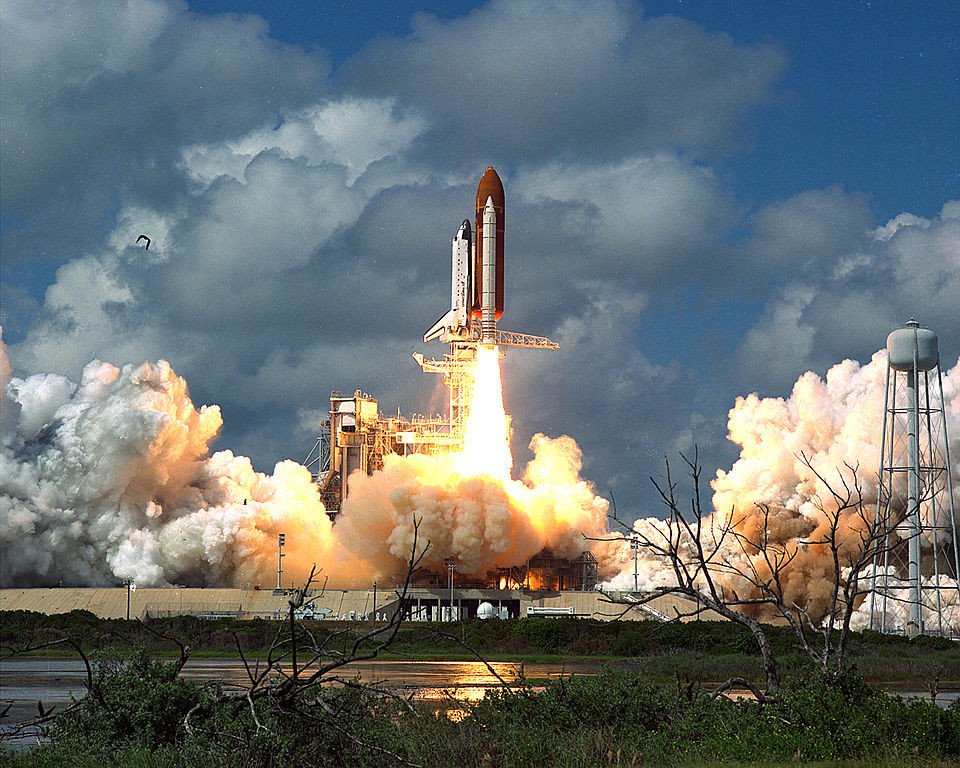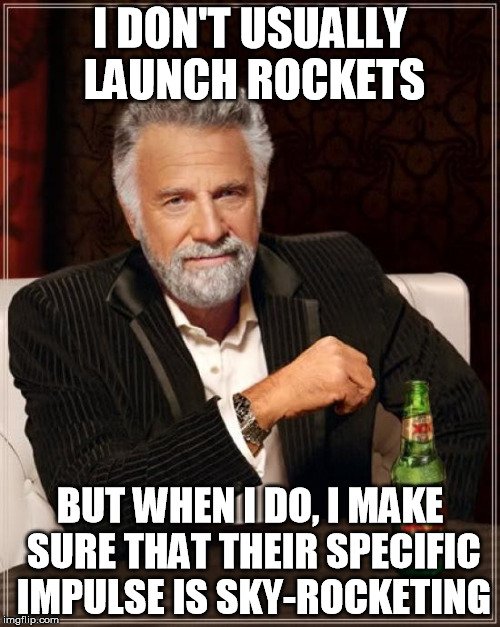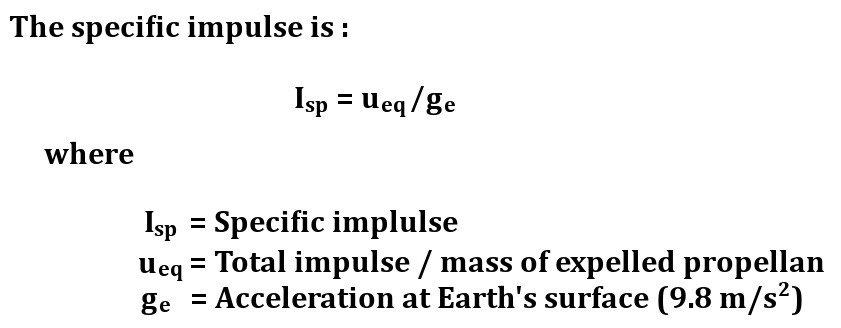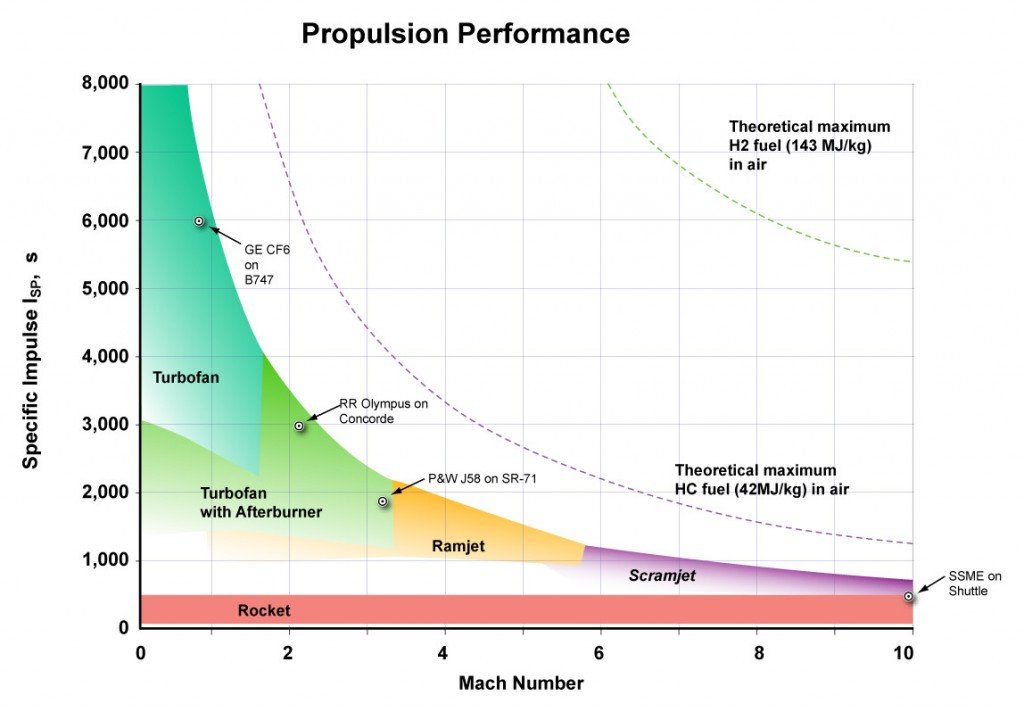Table of Contents (click to expand)
Specific impulse is a measure of efficiency for rocket engines. It is the change in momentum per unit of mass for rocket fuels. Simply put, specific impulse is a measure of how much push (thrust) accumulates as you burn the fuel.
Specific impulse is a measure of efficiency for rocket engines. More specifically, you could say that it is the change in momentum per unit of mass for rocket fuels. Simply put, specific impulse is a measure of how much push (thrust) accumulates as you burn the fuel.
From the aforementioned definition, it’s quite evident that you are most likely to hear the term ‘specific impulse’ in conversations regarding rocket and jet engines, especially those that revolve around rocket launches.
Specific Impulse Definition (And Difference From ‘Thrust’)
People often confuse specific impulse with thrust, which are actually two very dissimilar entities.
You may already know that, in the context of rockets, thrust is a measure of power, as in, if you don’t supply enough thrust to the rocket, it won’t lift off the launch pad.

As a matter of fact, you need this thrust not just to lift off, but also to achieve orbit (otherwise, what’s the point!). In a bid to ensure that you can make it into orbit (or wherever it is you are headed) using the minimum amount of fuel, you’d prefer an engine with a high specific impulse. This is because it will help you get more thrust from a given amount of fuel.
You see, the speed of a rocket depends on thrust (which roughly depends on the amount of propellant ejected out the back of a rocket, and the speed at which it’s thrown out); the faster the propellant is ejected from the bottom of the rocket, the faster it can go and the more weight it can carry with itself. Therefore, the specific impulse of a rocket is simply a rough measurement of how fast the propellant is thrown out the back of the rocket (Source).
The higher the value of the specific impulse of your rocket, the more oomph you get from the fuel rushing out the back of the rocket. That’s why a rocket with a high specific impulse wouldn’t have to carry as much fuel as a rocket with a low specific impulse.

In a nutshell, therefore, thrust is a measure of how hard engines can push, whereas specific impulse determines how much thrust you can get from a given amount of fuel.
Also Read: Why Don’t Space Shuttles Take Off Like Airplanes?
Specific Impulse Equation
Technically, specific impulse (denoted by Isp) equals the total impulse (or change in momentum) delivered per unit of propellant consumed. This relation tells us that specific impulse is inversely proportional to specific fuel consumption (i.e., the fuel efficiency of an engine design with respect to thrust output), which leads us to this simple equation:

Thus, if you know the exhaust velocity of a rocket engine, you can easily calculate its specific impulse, as the latter turns out to be a ratio of the exhaust velocity (Ve) and the gravitational attraction of the Earth (g).
Also Read: How Can A Rocket Turn In Space When There Is No Atmosphere?
Specific Impulse Units
While reading up on specific impulse from various sources, you’d likely come across a few of its units, which are different from one another, and might (potentially) confuse you a bit. Although specific impulse is most commonly expressed in seconds (s), it’s not uncommon to see it measured in m/s too; in some places, you could even see it expressed in N·s/kg.
However, specific impulse is most commonly expressed in ‘seconds’, as in the graph given below.

For instance, if a rocket has a specific impulse of say, 1000 seconds, then it means that the rocket can generate thrust for 1000 seconds, given a quantity of propellant whose weight equals the rocket engine’s thrust. Note that most manufacturers quote the specific impulse of their rocket engines in ‘seconds’.
Here’s a simple fact that will help you distinguish and understand different units of specific impulse: if weight (pound or Newton) is used as the unit of propellant in the rocket, the specific impulse is measured in seconds; when mass (kilogram or slug) is used instead, then it’s measured in meters/second.
How well do you understand the article above!

References (click to expand)
- What is specific impulse?. Northwestern University
- About Electric Propulsion | Space Propulsion Laboratory - spl.mit.edu:80
- 14.1 Thrust and Specific Impulse for Rockets. web.mit.edu
- Lecture Notes | Space Propulsion | Aeronautics and Astronautics. MIT OpenCourseWare
- Specific Impulse - NASA. The National Aeronautics and Space Administration
